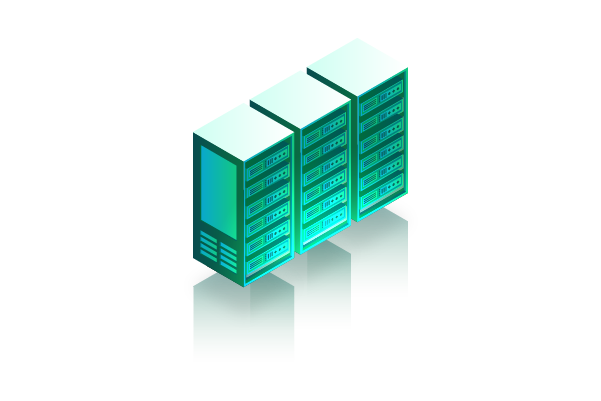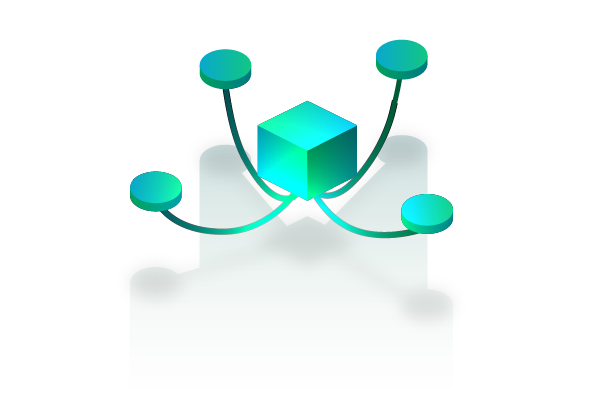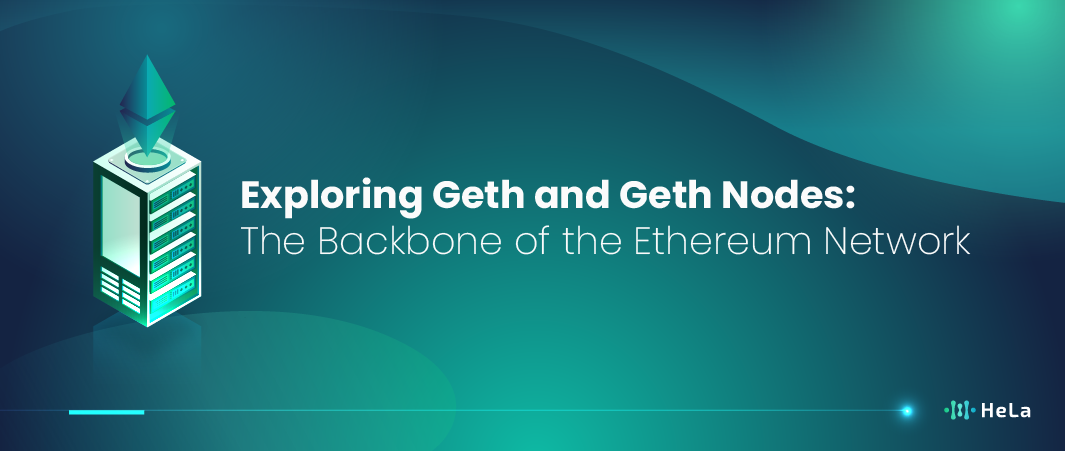Geth is no doubt a ‘must have’ in any Ethereum ecosystem because it is one of the main software implementations of the Ethereum blockchain protocol. Originating mostly in the Go programming language, Geth literally encompasses the ethos of decentralization and open-source cooperation principle that governs the Ethereum network. The existence of Geth has provided a solid base for all Ethereum users, developers, and miners, as well as playing a major role in a wide array of functions embedding the Ethereum network.
On the lower level, Geth acts as a client program that allows end users to communicate with the blockchain effectively. It is a gateway that connects users with the decentralized network to carry out different functions like creating and managing accounts in Ethereum, sending and receiving ETH, deployment and execution of smart contracts as well as interacting with DApps. With its versatility and reliability, Geth is now a popular software package for both newcomers in the field and experienced developers looking to tap the potential of blockchain technology.
What is Geth?

“Geth,” a short form of “Go Ethereum,” has a crucial place in the Ethereum space, providing the write-up for the Ethereum protocol in the Go programming language. This significance is based on the fact that it provides the nodes the ability to be a part of the Ethereum network by performing the transaction validation, smart contract execution, and block syncing among the network nodes.
In the essence Geth is the most important part of the decentralized Ethereum structure. Syncing to the network, nodes running Geth software communicate with each other, thereby forming a peer-to-peer network where all the transactions are propagated, verified, and added to the blockchain. This decentralized confirmation algorithm prevents any single entity from having authority over the network at the same time, satisfying an unprecedented level of transparency, security and censorship resistance.
In addition, Geth is a node through which the Ethereum blockchain developers and users are able to interface with the Ethereum blockchain. More and more developers utilize Geth to mobilize self-executing agreements with rules already established known as smart contracts on the Ethereum blockchain. Furthermore, Geth powers the querying of blockchain data, which in turn facilitates the development of Decentralized Applications (DApps) and services on top of Ethereum.
Besides providing transaction processing and smart contract execution, Geth also contains many utilities and functionalities that can help developers and network participants. Among these are a range of smart contracts debugging tools, network activity monitoring as well as account management tools. Because of Geth flexibility and robustness, it becomes an essential item for both developers who are building on Ethereum and users who engage the blockchain.
Key Features of Geth

Geth is probably the most used Ethereum standard for even running a node to be a part of the network and for managing the Ethereum blockchain commands through the command line interface. Here are some key features:
Node Implementation
Geth’s node implementation is the core of the Ethereum network, providing the necessary feed for the entrusting actors within the network. Conceptually, Geth installation helps users to run a full Ethereum node that contains duplicates of the entire Ethereum blockchain. As a result, the users participate in the network’s consensus mechanism. Users are now able to authenticate transactions, execute smart contracts, and operate the Ethereum software ecosystem in a direct permission-less manner which does not require any third-party services.
The design of Geth’s node implementation is made efficiently and scalably, which is enough to synchronize with the Ethereum network immediately and process many transactions per minute. It is driven by optimized networking protocols and data storage mechanisms that are highly conservative in terms of resources included, which makes all the nodes aware of the latest state of the Ethereum blockchain.
Network Connectivity
The concept of connectivity in Geth is multi – dimensional, performing a large number of activities that ensure the performance of the network as required. At the heart of Geth nodes’ capability to peer with other peers, which is the fundamental component of Ethereum network, lies the network connectivity. So through a peer-to-peer networking layer, Geth nodes can discover, connect to, and know the other nodes with different peers of them. The decentralized connectivity framework guarantees uninterrupted communications between the participating nodes, and this network provides a platform for coordination and collaboration within the network.
Also Read: Blockchain Operating System: The Key to Transparent Transactions
Geth takes advantage of the networking capabilities afforded by peer-to-peer connections, allowing transaction and block propagation throughout the Ethereum network. The nodes that get fresh transactions and blocks convey this data to their linked neighbors, which operates for data delivery across the network. This function is key in enabling each node to become a recipient of the lastest branch which in turn can validate transactions and blocks.
API Support
Geth covers many aspects of the Ethereum Blockchain in order to achieve this. It is a program used for developers who interact with the Ethereum blockchain through programming. Its APIs offer a broad range of functionalities that allow developers to build multifunctional and decentralized applications (dApps). Moreover, by integrating Ethereum’s resources into their projects, developers can now easily create sophisticated and decentralized apps.
Among the Geth features is its functionality whereby data stored in the blockchain is retrieved. This shows that developers can make use of APIs of Geth to gather data such as blocks, transactions, smart contracts, and other vital data stored in Ethereum blockchain. That results in the design of programs that may provide real-time data about blockchain, track transactions, and handle blockchain activity analysis.
What are Geth Nodes?
An Ethereum network would be incomplete without its constituting Geth nodes, the embodiment of decentralization and consensus distribution. Designed in the Go programming language, the Geth implementation, which stands for “Go Ethereum,” provides a comprehensive protocol fork of Ethereum. These nodes are characterized by their multiple functions within the network, including confirmation of transactions, smart contract execution, and blockchain data storage.
However, Geth nodes core is based on a full node maintenance that is characterized by a clean and updated copy of Ethereum blockchain. This database includes the entire transaction history; the states of all the accounts; smart contract and system status information. The operation of a vast amount of data is where Geth nodes come in, which enables all of the decentralized verifications and also the users that they can trust that the transactions and contracts are valid without the need of central authority.
One of the most vital roles of Ethereum nodes in the network is that they partake in the consensus algorithm which is used when a new block is created. The problem-solving process is called mining, and the participants do their best to complete the computational tasks that propose to validate blocks with high rewards. One of the main functions that miners perform is to secure the network through Proof-of-work (PoW) consensus mechanism. Besides securing the network, miners are also incentivized to contribute their computational power in exchange for block rewards and transaction fees.
Type of Geth Nodes

Ethereum, the decentralized platform based on the blockchain technology, in its turn, operates by the help of numerous nodes. These units carry out vital functions in the network, from verifying transactions to ensuring the network consensus. There are several types of Ethereum nodes, each serving specific functions within the ecosystem:
Full Nodes
Full node is an indispensable part of the blockchain society, symbolizing the revolutionary nature of the foundational ideology that delineates these innovative systems. However, the true essence of a full node is expressed in its role as an indestructible computing beast that is strictly responsible for holding the record of the blockchain in integrity.
They keep an unspoiled record of all the transactions that have happened since the very first block that was created and before these transactions, right up to the present moment, maintaining a complete history of all the network’s activity. This full-fathom data repository gives full nodes the power to look over each transaction line by line and back it up against the networked validated authority standards. The full nodes, through the validation, secure the network from both fraudulent and unauthorized transactions, therefore they ensure the system is safe from any security threat.
Additionally, the full nodes act as active participants in the blockchain network power the consensus mechanism. Blocks are created, verified, and network governance is handled by full nodes. According to varying consensus algorithms, which can be PoW or PoS or related ones, full nodes take on crucial lives in ruling the functional scene of the network. Through the combined validation of transactions and consensus on the ledger level why full nodes are used is that they are the reason behind the consistent operations of the blockchain network and the network’s ability to be trusted.
Light Nodes
The role of light nodes, commonly referred to as lightweight nodes, cannot be underestimated in decentralized networks. They are particularly important in the blockchain ecosystem. In this respect, their functioning differs from that of the full nodes which are maintaining a fully replicated copy of the blockchain ledger. Among the multiple layers of a blockchain system, the light nodes are responsible for solely saving important pieces of information, including block headers and significant transaction details.
By means of this streamlined approach light nodes reduce resource consumption and then they become a perfect option for devices with limited capabilities such as smartphones, tablets or Internet of Things (IoT) devices. Because of this efficiency in resource utilization, even those devices with limited storage capacity and processing power can flawlessly be used to participate in blockchain networks.
Notwithstanding their effectiveness, light nodes have disadvantages that can be expressed as security and decentralization issues. Light nodes simply cannot be compared to full nodes in terms of the solidity of their nodes with respect to verifying the entirety of the blockchain history. Therefore, they are often reliant on full node or trusted third party services for transaction verifications and network integrity. This dependence brings about a decentralization feature in that the network trustworthiness depends on the veracity and availability of these validating agencies.
Also Read: Top 10 Benefits of Blockchain Technology For Business
Archive Nodes
Archive nodes are essential components in blockchain networks and they play a critical role of carefully saving every transaction since the genesis block. As opposed to full nodes, which solely maintain the most recent blockchain state, archive nodes carefully keep all the details, offering a comprehensible story of the transactions history.
Their holistic data resource center supports a variety of activities in the blockchain platform. Mainly, it grants users access to the history of past transactions which results in better transparency and accountability. Such historical transparency not only helps develop trust among the network participants but also provides an avenue to verify the consistency of the blockchain’s evolution through time. For auditing purposes, compliance requirements and investigative purposes, availability of complete historical records is vital.
Conclusion
Geth, the name meaning Go Ethereum as well, is the most popular implementation of the Ethereum blockchain. Built by Geth in the Go programming language, it is the spine of the Ethereum network and is the way that people can get in contact with the blockchain, run smart contracts and transfer Ether—Ethereum’s native currency.
Geth nodes are the backbone of the Ethereum ecosystem as they act as the perpetual constituents of the system to maintain its decentralized features. These nodes are running apps and services to support tasks such as transaction validation, transmission, and blockchain state agreement through consensus mechanisms. Geth nodes, by cooperating, add to the network’s core strength which guarantees it to be robust and bug-free. Besides, Geth has an open-source nature which stimulates the Ethereum communities to work in collaboration and innovate making possible for the developers to continue adding improvements and developments to the software.
As a result, nodes of Geth and its endowment play the key role of ensuring the network scalability, functionality and decentralization in the Ethereum ecosystem. Not only do they help the operational efficiency of current dApps but they are also the source of new developments and will allow further progress in the field of blockchain technology to evolve. Geth, as one of the major components of the Ethereum system, and its nodes provide the base for the whole ecosystem of Ethereum and thus make it possible to carry out the vision of Ethereum platform as decentralized, transparent and widely applicable.
Disclaimer: The information provided by HeLa Labs in this article is intended for general informational purposes and does not reflect the company’s opinion. It is not intended as investment advice or a recommendation. Readers are strongly advised to conduct their own thorough research and consult with a qualified financial advisor before making any financial decisions.

